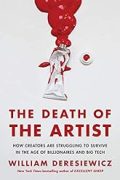
Rating: 7.7/10.
Book covering the history of autonomous driving, starting from the earliest days with the DARPA Challenge in 2003, and continuing up to 2020. The story begins when DARPA, motivated by the 9/11 attacks, decides to invest heavily in autonomous robots for potential military use in conflict zones like Afghanistan. As a result, DARPA launched a challenge for racing vehicles through the Nevada desert in 2003; this was the first competition of its kind and marked the first serious attempt at creating self-driving vehicles.
The two main characters in the event (and the whole book) are Red Whittaker from CMU, a former Marine who assembles a small truck equipped with sensors and actuators; and Anthony Levandowski, with a motorcycle, an unusual concept since no one else in the race had attempted to use a motorcycle. Levandowski was later sued by Google for allegedly stealing secrets from their self-driving program and taking them to Uber. The first iteration of the DARPA challenge was not successful, as no one came close to completing the challenge, and all the contestants faced difficulties near the start, although Whittaker’s team managed to travel a few miles before getting stuck.
In 2005, DARPA launched the contest again, and this time the contestants performed much better, with several managing to complete the race. Stanford’s team emerged as the leader, while Whittaker’s team secured second place. Levandowski’s motorcycle was not considered a serious contender. The 2007 iteration of the competition featured city driving instead of desert terrain and took place in a marked-up suburb in a large parking lot in the Bay Area. This competition included challenges like four-way stops and roundabouts, and saw the CMU team taking first place.
Around 2009, Google started funding its own self-driving program, led by Levandowski. Their strategy involved meticulously mapping every part of a planned route and combining this information with LiDAR and GPS. This allowed the car to pinpoint its location; with this combination, they managed to drive a few kilometers at a time on the roads of San Francisco. However, the system was not very reliable, as it couldn’t handle any deviations from the planned path.
The journey from a quick demo to a usable product proved to be a long one, during which the Google team began losing momentum. In 2015, Levandowski left the team and started a new company, which was quickly acquired by Uber. Uber, recognizing the crucial role of autonomous driving technology in their business model, began investing heavily in it. They initially started testing in California, but after being banned, they moved their operations to Arizona. Concurrently, traditional auto manufacturers like Ford and GM also started investing in autonomous driving. However, their approach, influenced by a more conservative corporate culture, focused on the relatively low-risk area of highway driving, even as they acquired some Silicon Valley startups that could move faster.
Uber’s self-driving program encountered significant difficulties in 2018 after one of its vehicles was involved in a fatal accident with a pedestrian in Arizona, raising questions about liability—whether it was the company’s or the safety driver’s fault. This incident, coupled with the legal issues stemming from Google’s lawsuit against Levandowski for allegedly stealing trade secrets, led Uber to shut down their self-driving program shortly afterwards. Meanwhile, Waymo managed to take passengers around the suburbs of Arizona, but the service was not reliable enough to operate autonomously, still requiring a safety driver in the vehicle. Thus, nearly two decades after the DARPA Grand Challenge, the reality of fully autonomous self-driving vehicles remains a challenging goal yet to be achieved.
Overall, the book presents an exciting story about the race to develop self-driving cars and the personalities behind this drama, particularly during the dramatic competition events. However, it contains very little technical detail, focusing on a few characters and their personal characteristics. This focus is expected, given that the author is a journalist, not an engineer or a scientist. In this aspect, the book might be slightly disappointing for those seeking in-depth technical insights.



